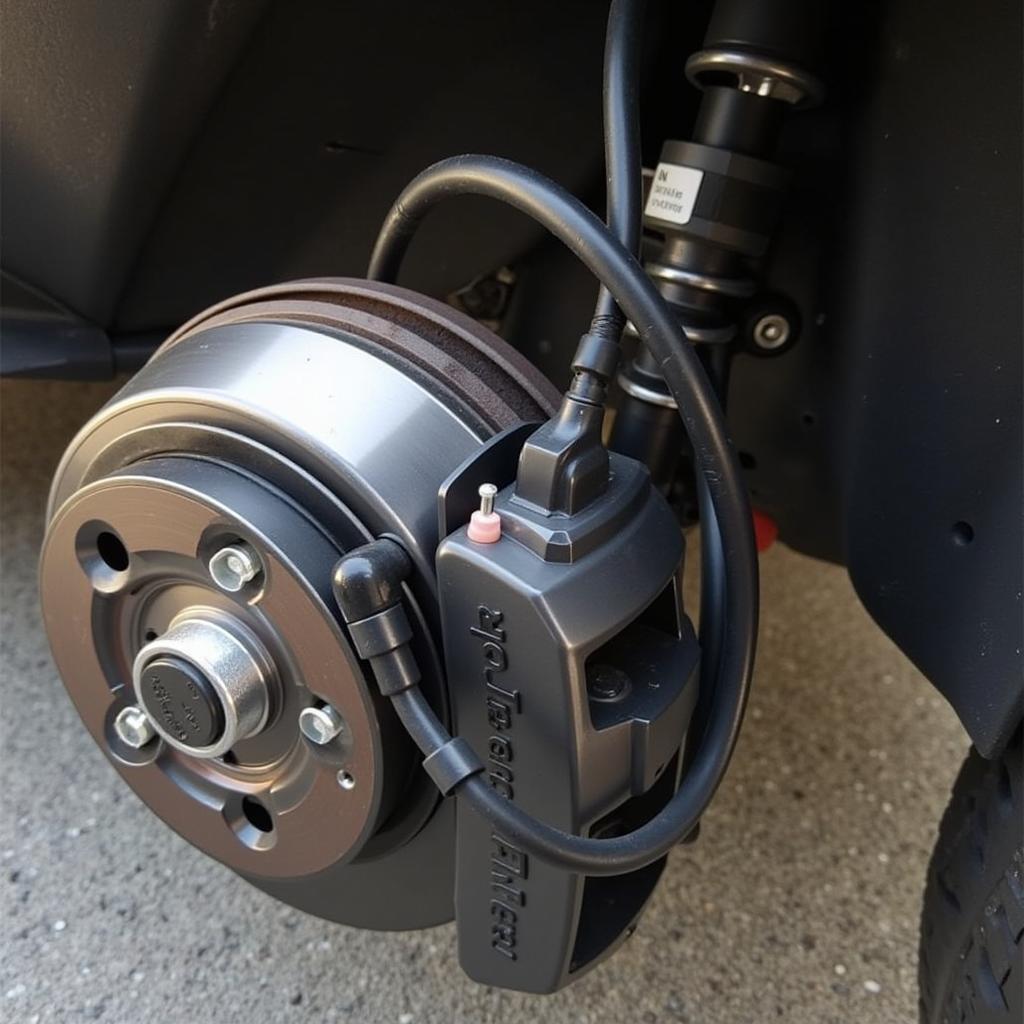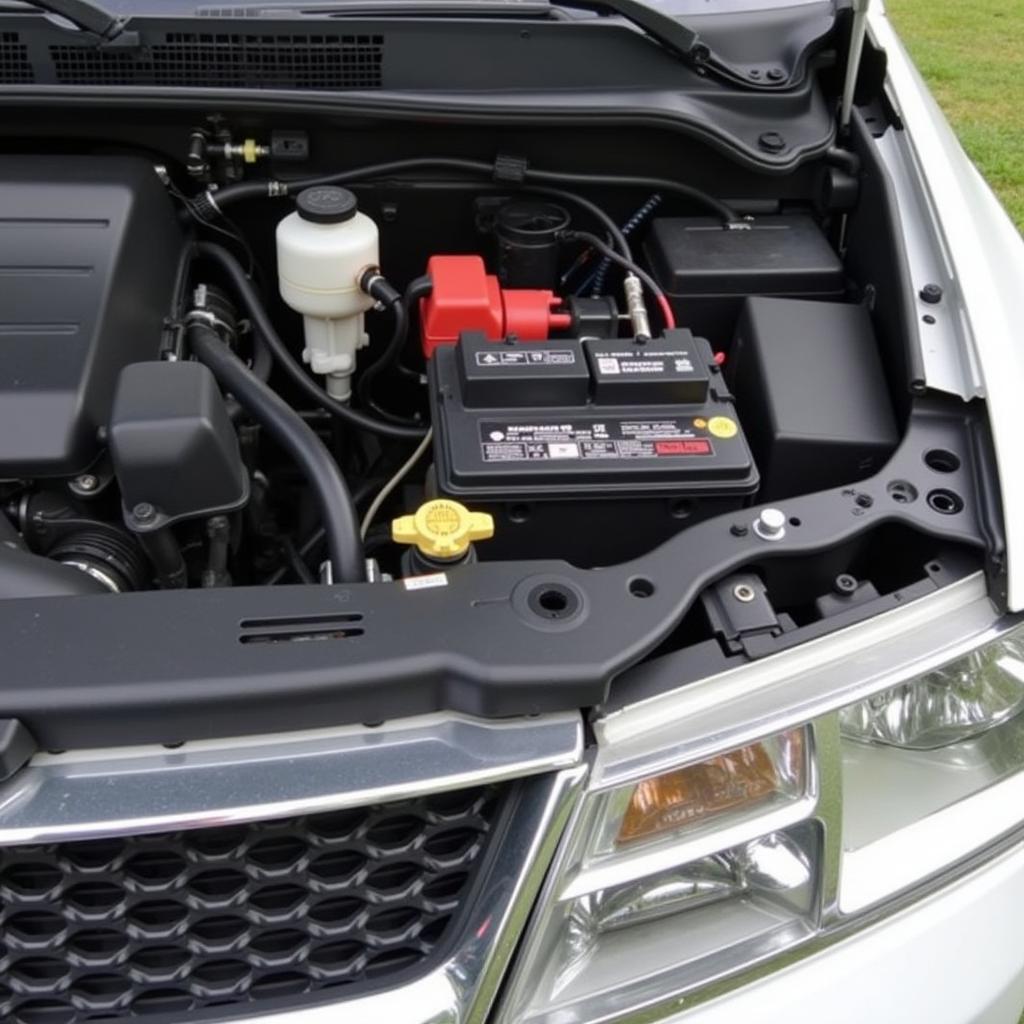If you’re hearing a persistent beeping coming from your Toyota Auris and it’s related to the seat belt warning, you’re not alone. This common issue can be frustrating, but understanding its cause and the available solutions can save you time and money. This article will explore the reasons behind this warning sound and provide you with practical steps to address it.
Why Does My Toyota Auris Seat Belt Warning Sound Go Off?
The seat belt warning sound is a crucial safety feature designed to remind drivers and passengers to buckle up. In your Toyota Auris, this usually manifests as a beeping sound and/or a visual warning on the dashboard. While its purpose is vital for safety, there are times when the warning can be triggered even when everyone is buckled in properly. Here are some common reasons why:
-
Faulty Seat Belt Buckle Sensor: The most frequent culprit is a malfunctioning sensor within the seat belt buckle assembly. This sensor detects whether the buckle is fastened correctly. If it sends a faulty signal to the car’s computer, the warning sound can activate even if the seat belt is securely fastened.
-
Wiring Issues: Over time, the wiring connected to the seat belt buckle sensor can become worn, damaged, or corroded. This can disrupt the signal transmission, leading the car’s system to misinterpret the sensor’s data and trigger the warning.
-
Software Glitch: Modern cars like the Toyota Auris rely heavily on software to manage various systems, including safety features. Occasionally, a software glitch can cause malfunctions, potentially affecting the seat belt warning system and causing it to activate erroneously.
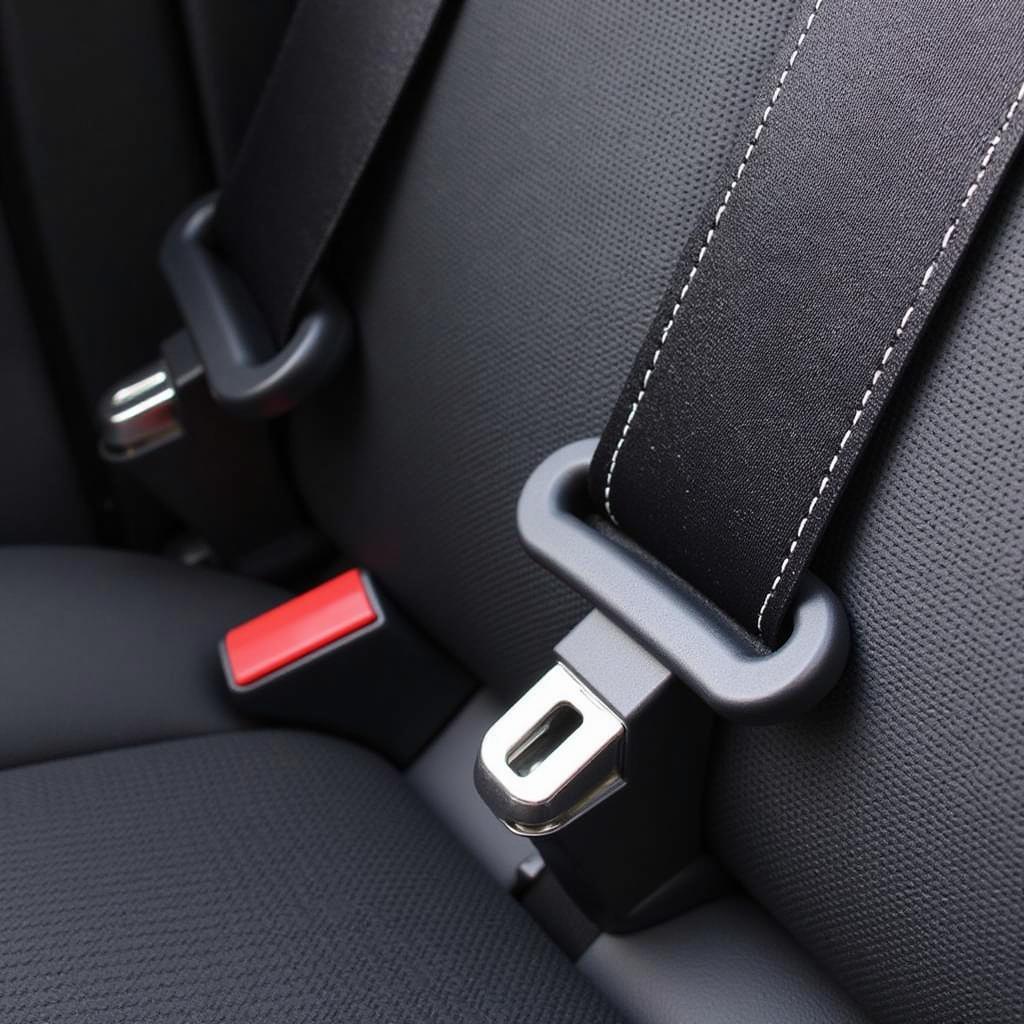 Toyota Auris Seat Belt Buckle
Toyota Auris Seat Belt Buckle
Troubleshooting the Toyota Auris Seat Belt Warning Sound
Before assuming the worst and heading straight to the mechanic, there are a few simple troubleshooting steps you can try to resolve the issue yourself:
-
Check the Obvious: It might sound overly simplistic, but ensure that all seat belts are indeed securely fastened. Sometimes a slightly loose belt can trigger the sensor. Make sure to check both the driver and passenger seats, as well as any rear seats if they are occupied.
-
Fasten and Unfasten Seat Belts: Try fastening and unfastening each seat belt a few times. This can help clear any temporary glitches in the sensor or wiring.
-
Inspect the Buckle and Wiring (Visual Check): Carefully examine the seat belt buckles and the surrounding area for any visible signs of damage, debris, or corrosion. Pay close attention to the wiring harness connected to the buckle. Look for any loose connections, cuts, or fraying wires.
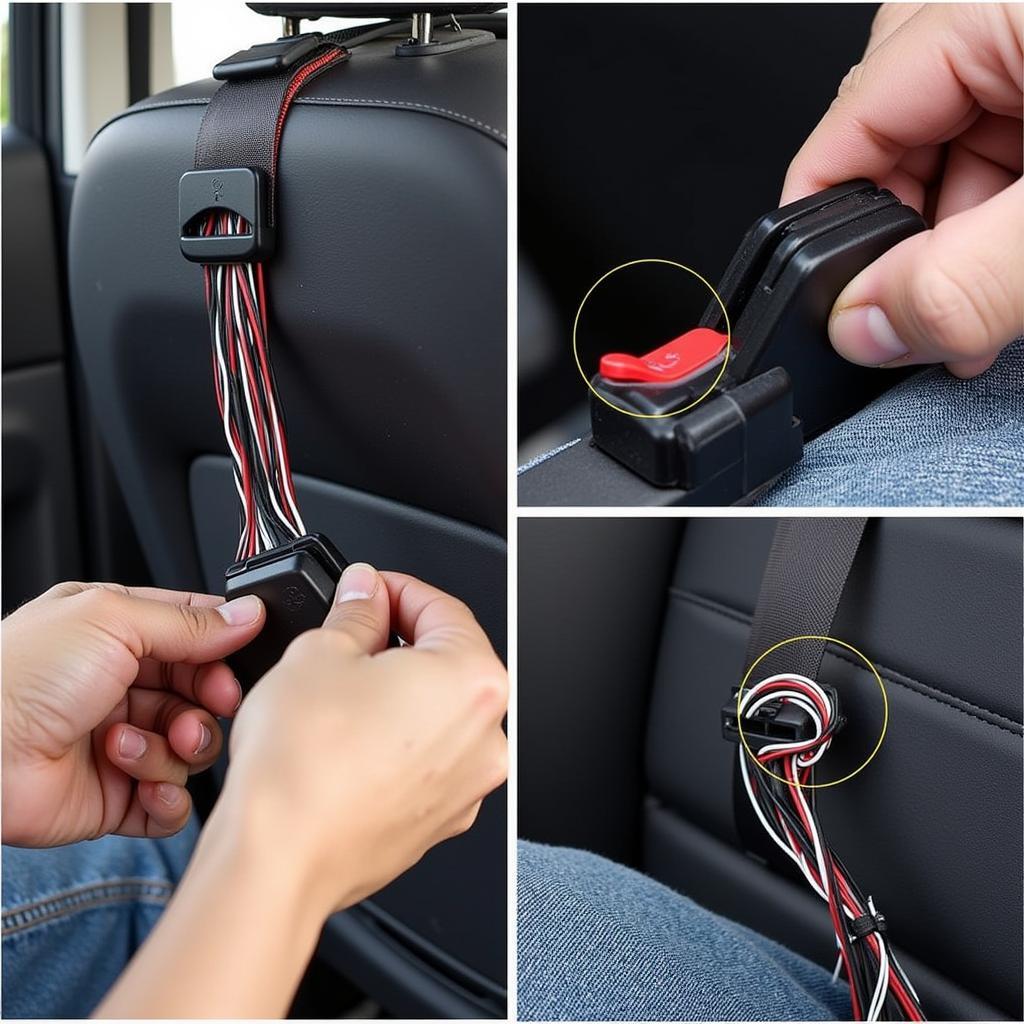 Inspecting Seatbelt Wiring
Inspecting Seatbelt Wiring
When to Seek Professional Help
If the troubleshooting steps above don’t resolve the issue, it’s highly recommended to seek assistance from a qualified automotive electrician or your trusted Toyota dealership.
“Ignoring a persistent seat belt warning sound is never a good idea,” advises John Miller, a senior automotive electrician with over 20 years of experience. “What might seem like a minor annoyance could indicate a more serious underlying electrical or software issue.”
Professional technicians have the diagnostic tools and expertise to pinpoint the exact cause of the problem. They can access the car’s computer system to read error codes related to the seat belt warning system and perform advanced diagnostics. Depending on the diagnosis, they might recommend:
-
Replacing a Faulty Seat Belt Buckle Sensor: If the sensor is determined to be defective, a replacement will be necessary.
-
Repairing or Replacing Damaged Wiring: Any damaged or corroded wiring will need to be repaired or replaced to ensure a stable connection and accurate signal transmission.
-
Updating or Re-flashing the Car’s Software: In cases of software glitches, updating or re-flashing the car’s software to the latest version can often rectify the issue.
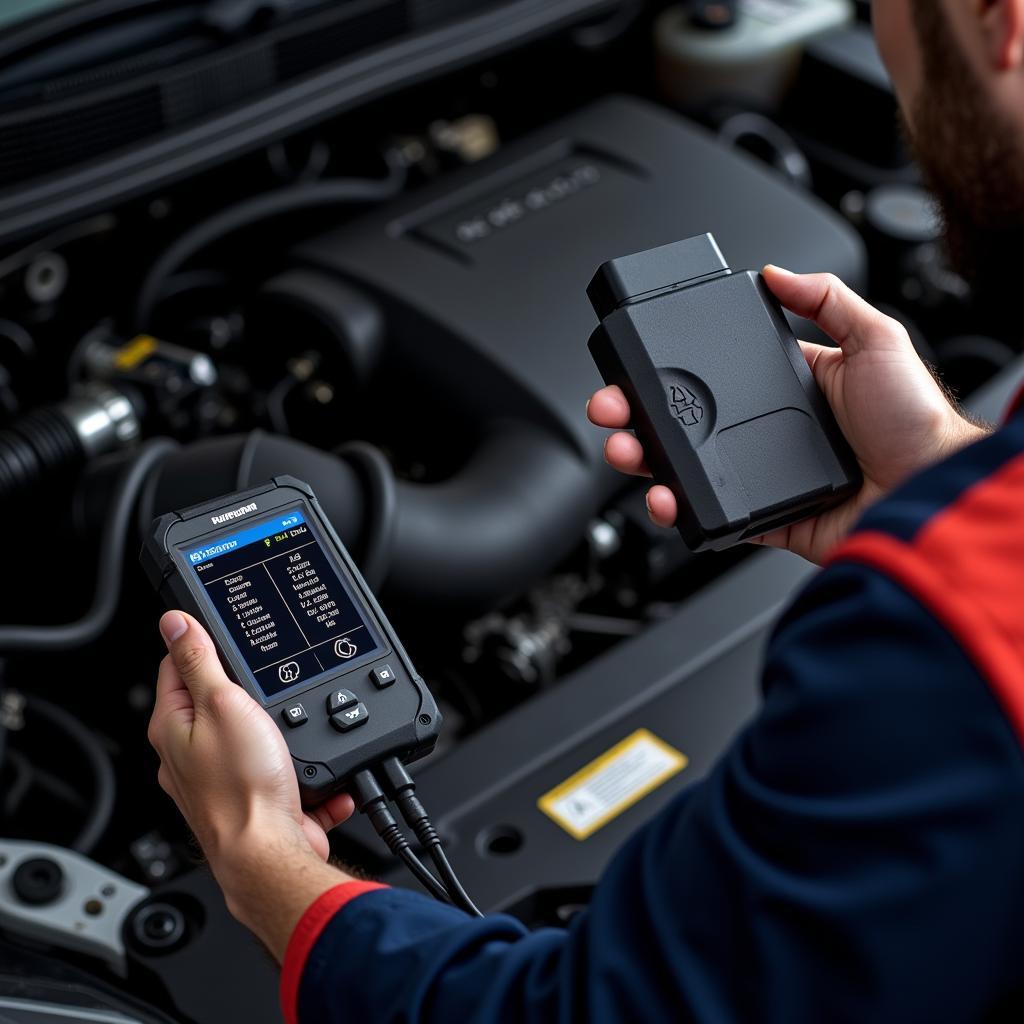 Car Diagnostic Scan Tool
Car Diagnostic Scan Tool
Conclusion
While the Toyota Auris seat belt warning sound is an important safety feature, it can be triggered due to various reasons, ranging from simple glitches to faulty sensors or wiring issues. By following the troubleshooting steps outlined in this article, you can try to resolve the problem yourself. However, if the issue persists, seeking professional assistance is crucial to ensure your safety and prevent potential hazards on the road. Addressing the root cause promptly will not only restore peace and quiet to your driving experience but, more importantly, will ensure that this critical safety system functions correctly when you need it most.

